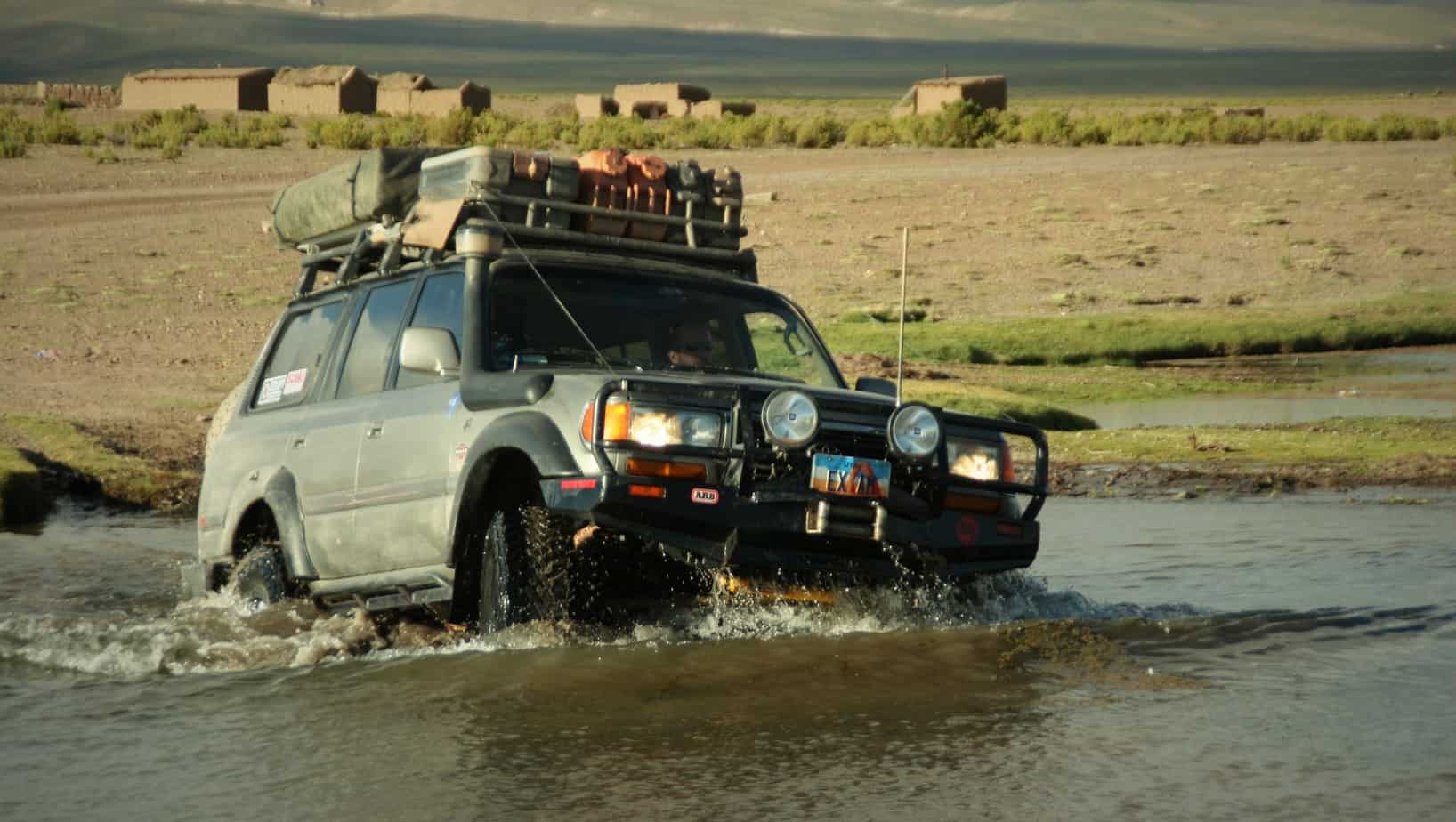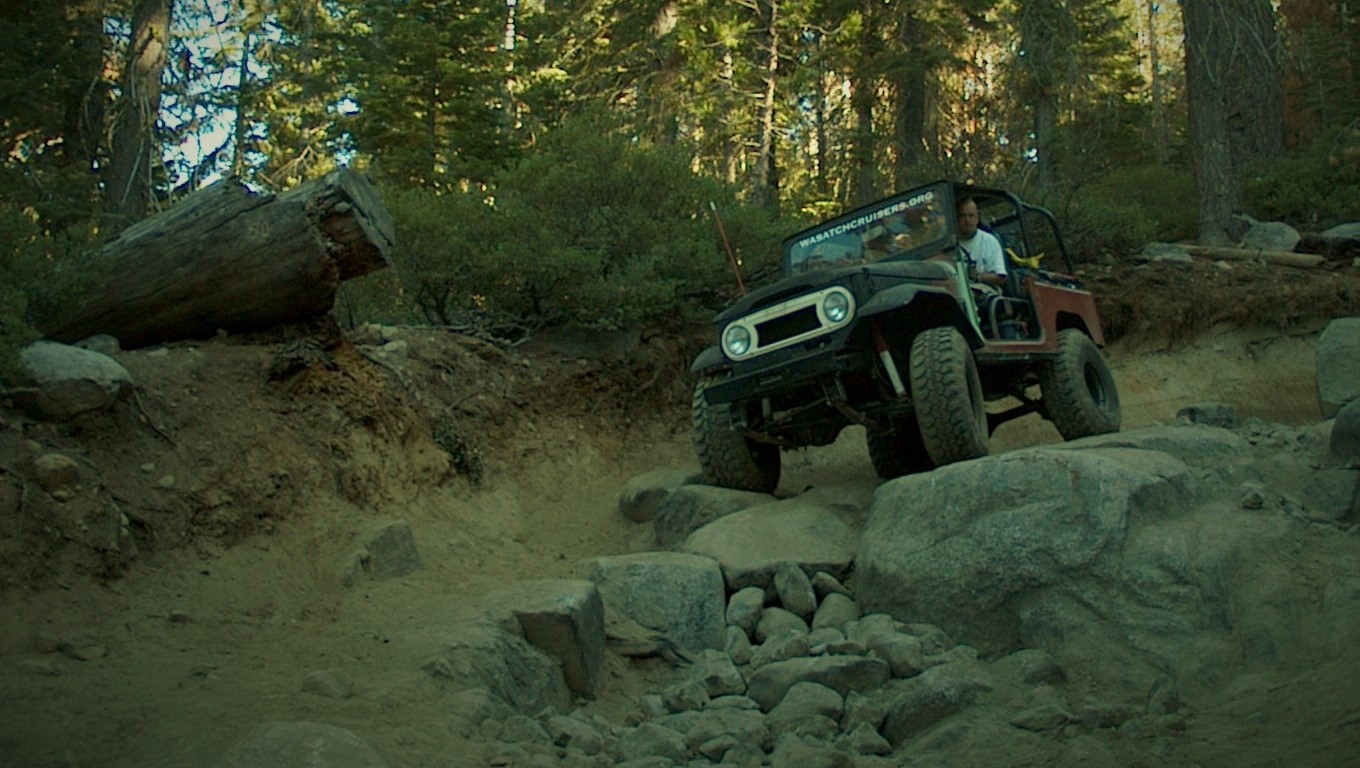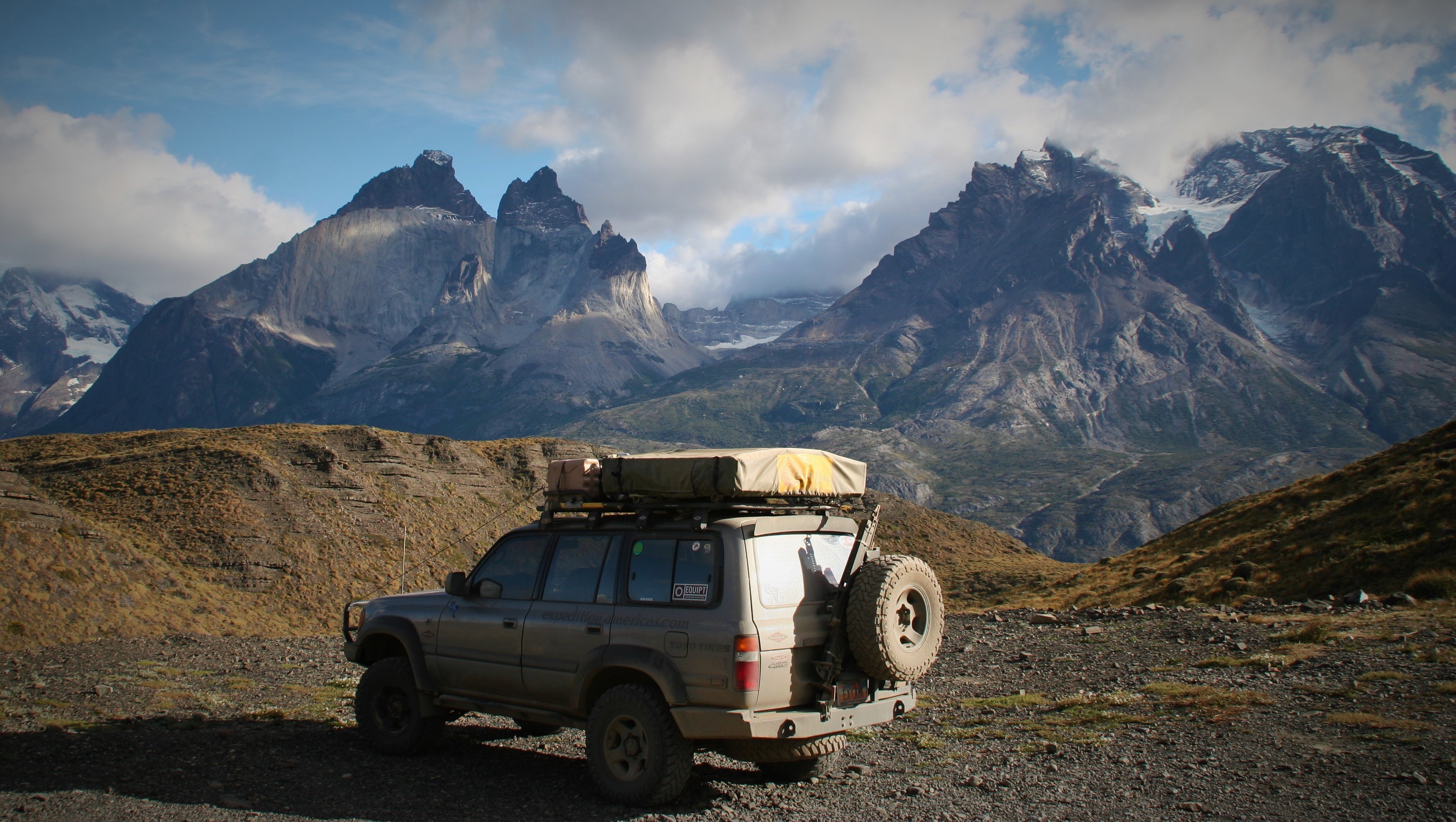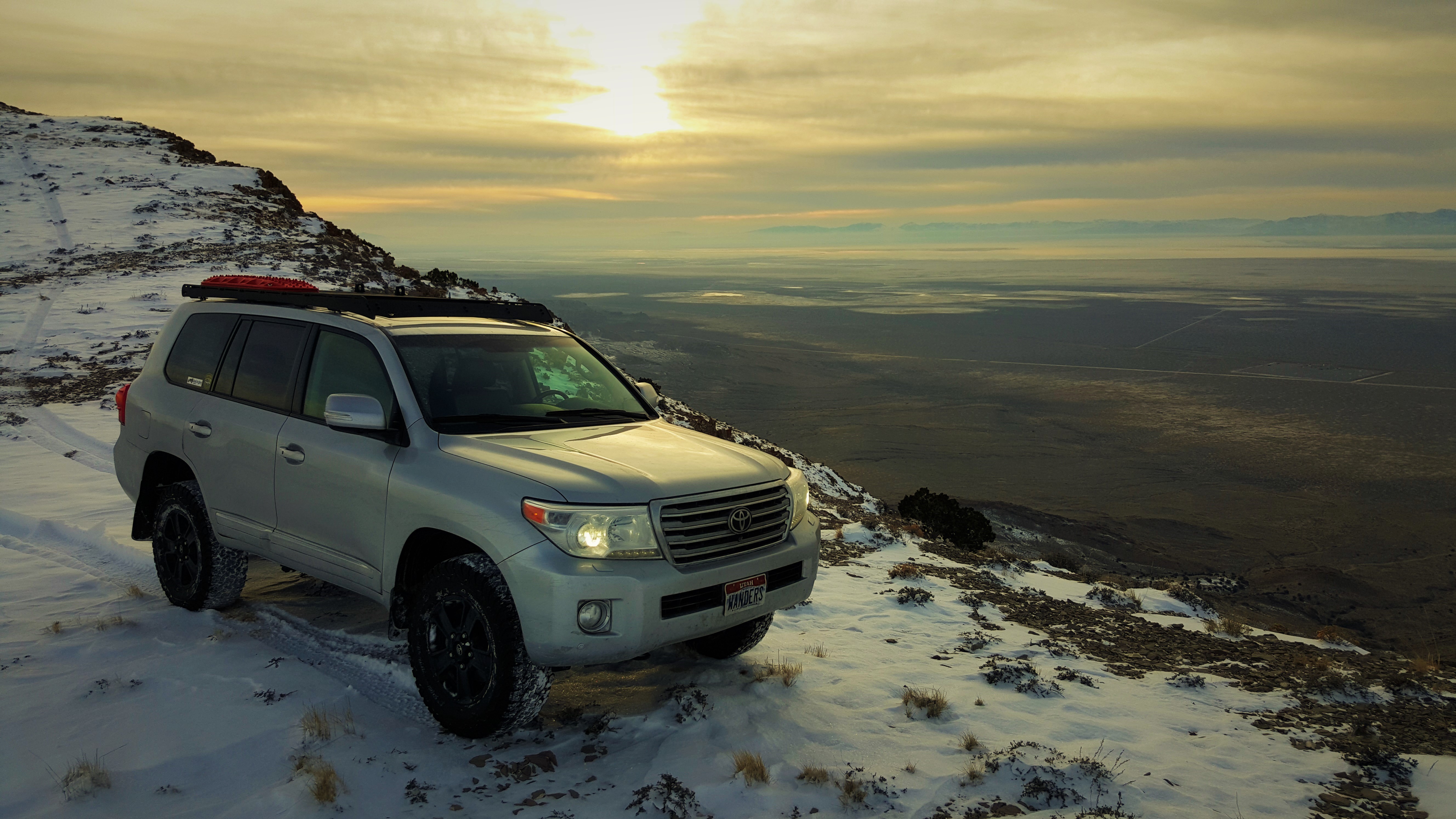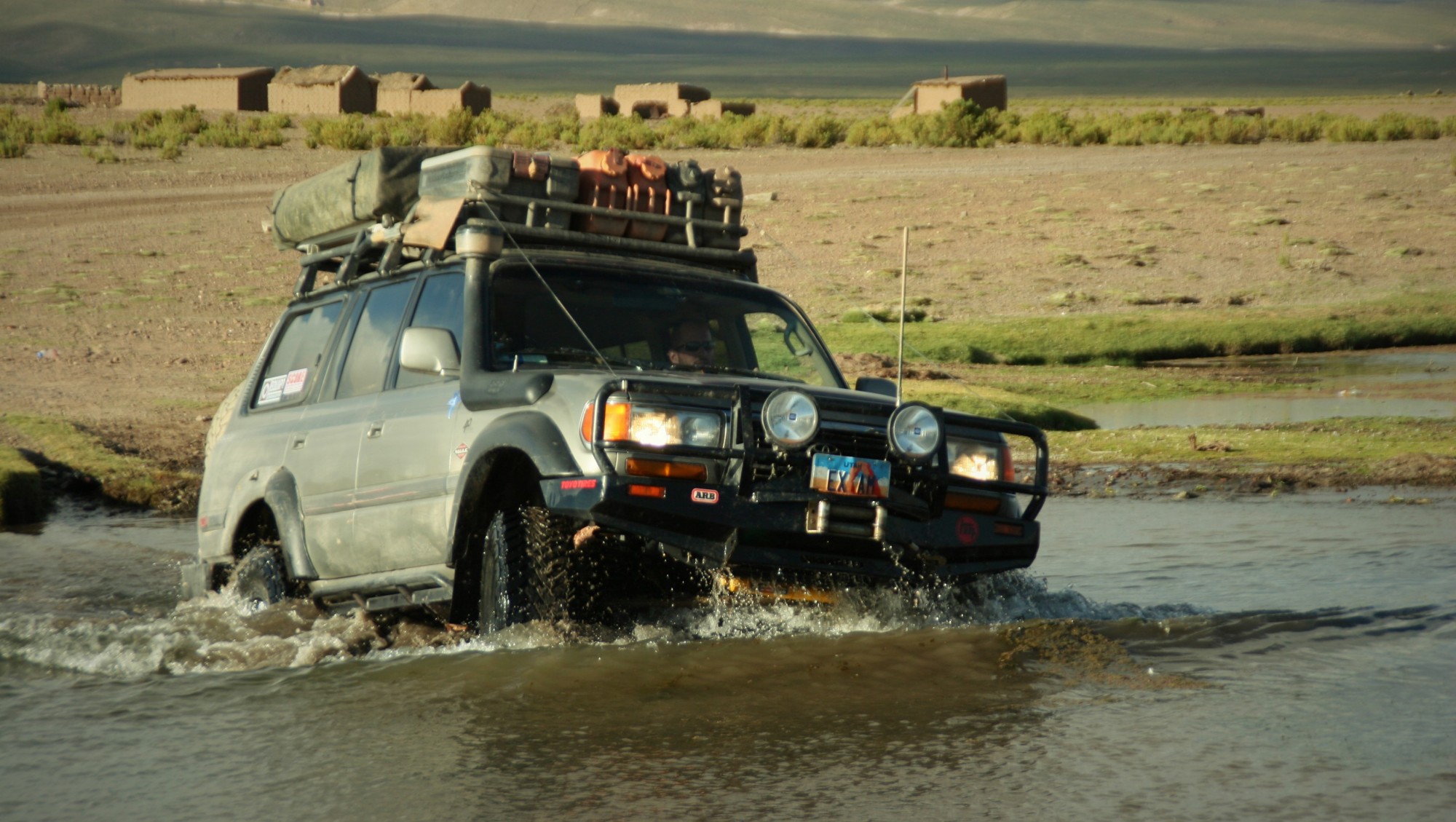It’s got too many doors. It’s not a real Land Cruiser.”
“Automatic transmission? Power windows? Yeah not a Cruiser.”
“Leather interior and auto climate control do not belong in a Land Cruiser.”
“Heated seats, navigation, too many cylinders and IFS! Really? I’m done with Toyota.
We can’t get real Cruisers in the US.”
“Way too many electronics. Way too expensive. It’s not even a Land Cruiser anymore.”
I’m not going to call Cruiser owners Luddites. Far from it. Few hesitate to add aftermarket goodies to their rigs and innovation was once a trademark of the community. For a long time we didn’t have the support here in the US that other brands did. Australia and South Africa were a long way away in the pre/early internet days so most solutions were home brewed or urban legend. Adoption of a new platform, however, has always been met with cynicism and reticence. For a group so loyal, we Cruiserheads are reluctant to trust Toyota with any changes they make to our beloved Land Cruiser. I’ve not been an early adopter but with each evolution of the US Land Cruiser I’ve come to realize Toyota respects and honors the heritage and legacy of the venerable marque. 8 months ago I purchased a 2013 200 Series Land Cruiser. 36k miles later, and in the interest of science, I have done my best to prove its worthiness.

Let’s get this out of the way right now. I’m a bigot. I’m not just a Toyota bigot but I’m a Land Cruiser bigot. I loved my 97 Tacoma but the entire time I owned it I kept thinking ‘it’s just not a Cruiser.’ If you’re comfortable reading Land Cruiser opinions from an admitted fanboy then let’s proceed. I purchased my first Land Cruiser in 1997. It was 10 years old with 118k miles on the clock. Blue FJ60. I’d driven other 4x4s, both foreign and domestic, but something about the Land Cruiser appealed to me. I was stoked to have my first and named her Suite: Judy Blue Eyes. She ran on HUGE 32×10.50 Goodyear directional MTs and I added a full length Con-ferr porthole roof rack. I was young, naïve, and fit, so I still thought it was cool and functional to carry my spare tire up there. Front and rear bumpers were Smitty Built and I threw some lights up front. Other than that she was bone stock. Hand crank windows, mechanical levers. She was very basic. 3 years and 110k miles later I sold her because I needed better fuel economy for my daily commute. Twice she made the trip from Utah to Alaska. Adventures to Death Valley, the Mojave Desert, Pacific Northwest and dozens of trips throughout the deserts of Utah with only a replaced starter as a repair taught me that the Land Cruiser reputation for reliability was indeed well earned.
In 1998 I added a 1966 FJ40 to my resume. A complete pile of rust, but reliable and emissions exempt, Althea was the perfect second vehicle for a broke college student. Over the next 10 years she underwent many modifications including all new sheet metal. She evolved into a rock crawler where I learned that non-syncro’d 3sp transmissions and drum brakes may still work after 30 years but are not ideal on the trails of Moab and California. Upgrades were made but she remained a Land Cruiser in spirit. It was during the early years of 40 ownership that I first read Who Needs a Road? and I would shudder to think about driving my beloved FJ40 around the world. However, a seed was planted. About this same time I ran into a couple from Argentina on the Alaska Highway. The seed was now fertilized. I kept Althea until 2006 when life changes dictated she move on to a new home.
After selling my FJ60 I drove a Subaru Outback for a bit then upgraded that to a Tacoma. Both saw thousands of dirt miles and took me to some amazing places including two more trips to Alaska and my first trip up the Dalton Highway. I still had my 40 but felt like I needed to get back into a Land Cruiser for my longer adventures. The Taco and Outback were great but they were not Land Cruisers. In April 2004 I purchased my dream truck. A 1997 40th Anniversary 80 series in Antique Pearl Sage Metallic paint. 101k miles and already lifted with an ARB bar, winch and factory lockers. I was late to the 80 series game but had spent enough time with friends in their trucks to have seen the reliability and performance worthy of the name. I didn’t tell many people at the time but I knew Ruby Claire would be the truck to take me down the Pan-American Highway. That seed was now a flowering dream. I wasn’t sure how soon it would happen but it was on the agenda. In the meantime she reliably took me down 68k miles of back roads, dirt tracks and washboard highways of the western US, Baja and yes, yet another trip to Alaska. This time in the winter of 06. I slowly added things I thought I would need while living out of my car. Roof rack, Eezi-Awn RTT, ARB fridge, electronics, 4.88s and some other goodies. I also had to take care of some of the niggly items that caused a blemish on the Land Cruiser legacy. Namely the notorious PHH, inner axle seals and EGR issues. I was lucky to avoid the head gasket failure but 97s also have a better track record there.
Many would find folly (and quite a few told me to my face) in leaving on a solo trip down the Pan-American with 168k miles on the drivetrain of any vehicle. I did so without hesitation. I sold my FJ40 and all my belongings and hit the road. The 80 drivetrain was a proven commodity. Parts would be available in most countries if the situation required. Along my 35k mile route I drove to an elevation of 17,800ft, crossed dozens of rivers, explore remote jungle two track, nearly rolled down a volcano in Panama, and did some serious 4 wheeling with the local Land Cruiser club in Bogota, Colombia. When I was out of cash I shipped Ruby home to Utah. I added another 46k miles to the odometer over the next two years and sold her in 2011 after picking up a 2003 100 series. Sadly right after selling her the radiator failed on the new owner. What had been a near perfect truck did not live on forever. Only 247k miles on the odometer at the time.
Scott Brady has called the 100 series the Best Used Overland Vehicle you can buy. In my firsthand experience I agree with him. Super reliable, great availability and easily modified make for an ideal platform. V8, IFS, navigation, computers. Not a Land Cruiser. Suuuure. Multiple Baja trips, thousands of miles of dirt roads, brutal rock crawling and not one hint of unreliability out of my lovely Wynonna. Picked her up with 72k. Sold 4 years later with 168k. During this time I was working from home so it’s safe to say 80% of those miles were spent exploring the deserts of the American Southwest. I’d had the good fortune of riding, or sharing, a trail with Paul May from Equipt Expedition Outfitters and his superb 100 series many times and knew what to expect from my 100. I was able to get the newer 5-spd tranny and updated dash. Simple Old Man Emu lift and other requisite mods made for a very nice truck. There was nothing about my 100 series I would change. Torsion bars and all. The US 100 Series sales volume hovered in the 10-15k per year and used prices are normally reasonable so the popularity of the platform comes as no shock.
So why the 200? I even recently told a friend that given the option to buy a brand new 4 Runner or a used 100 I’d buy the 100 series. Lowest mile version I could afford for that same money. At a minimum that would be an 8 year old truck. The used market for 100 series was somewhat crazy last spring. Trucks going for a lot more than I thought they were worth. All the Luddites and nay-sayers had caught on to how great it is. I thought I’d test the waters and ended up selling my 100 and the hunt for the 200 was on. That doesn’t fully answer the question though. Why the 200?
I’ve been desert racing since 2010. Canguro Racing originally raced a VW powered Class 5. However, we were all Land Cruiser owners. As much as we loved racing Class 5 we wanted to race a Toyota. When Joe Bacal listed his race proven Geiser Bros built LX570 for sale we had to jump on it. Our first adventure in the new truck was the 640 mile Vegas to Reno race in August of 2014. I co-drove off the starting line then drove the second leg. I realize everyone on Expedition Portal spends a lot of time on dirt roads and are confident in their driving skill. That’s how I felt too before I started racing. Desert Racing is a different animal than exploring the White Rim or the Mojave Road. It is brutally tough on the vehicles and the conditions are far more difficult during a race as the fastest vehicles destroy the course ahead of you. Our race class is Stock Full. Yes all electronics have been removed but drivetrain and suspension links are all stock. I distinctly remember one point during that first race. We’d just come out of nasty, twisty, section of rock and silt and turned onto major access road. We’d been battling for about 2 hours, passed about 30 vehicles (we started in the very back as we chose not to race in class our first race) and finally had a chance to relax a little. It was mid-90s out, we were climbing about a 6% grade and pushing a 110mph. I glanced at the scan gauge and our water temp was 193 degrees. I was shocked how little the motor was bothered by race conditions. Add in a 1300 mile Baja 1000, all the miles Joe had put on the truck and I was convinced the drivetrain was bulletproof. Leakdown tests and bearing inspections confirmed it. We converted the LX sheet metal to a Land Cruiser and made her our own. Our race truck sees more abuse in one Baja 1000 than my own rig will see in its lifetime and I drive my own stuff pretty aggressively. So when I threw my 100 on eBay to see what would happen I was sure a 200 would be the replacement. (There is one huge overlap from overlanding to desert racing and that is endurance. Many times while exploring dirt roads or seeking out that perfect, remote campsite the hours behind the wheel add up. For a lot of people 8-16 hours behind the wheel seems like a nightmare. Pretty much every one I know that spends time on ExPo looks forward to a day like that.)
The only downside I’ve found to the 200 so far is the used market. Because the sales volume is so low, about 2500 per year, there are not many for sale and the prices have remained high. Fortunately the LX570 sells very well so there are options. I found my 200, Amie, at a Toyota dealer in Brooklyn, NY. She was certified pre-owned with 14k miles and priced better than those in areas that have wider roads and places to park. I cashed in some Skymiles and took the Friday morning redeye to JFK. Deal done I hit the road, using mostly 2 lanes, with some desert and Interstate thrown in I found myself in Newport Beach, CA late Sunday night. Not an ounce of fatigue and I was in love with the 200. After getting her back to SLC I threw on an Old Man Emu lift and some BFG KO2s. 8 months and 36k miles later and I look forward to driving her every day. I still work from home so those 36k miles have been good ones. A month and 9k miles in Alaska. Escaping a flash flood in Escalante. Backcountry miles in Utah, Colorado, California, Arizona, Idaho, Nevada and of course Baja have all added to the tally. I’ve done a lot of exploring in Land Cruisers over the last 18 years. I’ve lived out of my truck for months on end and pushed myself to the most remote corners of the Utah deserts. I used to swear by a solid axle and a mechanical locker. I still use paper maps but have absolute confidence in the absolutely modern Land Cruiser. I was on a trail near Moab last fall and came to a pretty decent obstacle. I thought I’d give ‘Crawl Control’ a shot and see how well it works. The 30 foot climb was mix of loose sand, dirt, and rock ledges. Without question my 200 climbed it better than my ARB locked 100 and factory locked 80 would have done. It didn’t even slip a tire. I used to say lockers were like cheating when it came to rock crawling. Crawl Control in the 200 series is cheating. It can do it better than I can. Is it as fun? Probably not but the fact that Toyota engineered it to do so validates my point earlier. They understand how these trucks will be used. For a guy who does a lot of solo overlanding I can’t tell you how much I love the ‘gimmicky’ cameras. The flash flood that trapped me in Escalante required some very technical wheeling to get out. Without a spotter I used the cameras to escape scratch and incident free.
Value is a funny thing. It means different things to different people. The sticker on my 1997 80 series was $53k. I still love the 80 platform and think it is an amazing truck. Mine took me through 17 countries and 150k miles without issue but I think the first owner overpaid for it. I’m glad they did so I could pick it up 7 years later for significantly less. My 100 series was $64k new. Is it the best used overland value out there? Yes. Was it originally worth $64k? Probably. Again thankful to the original buyer. Here is what I keep coming back to when it comes to the 200 series. I think the truck is worth more than the $80k price tag. The materials and build quality are that of a luxury car and the soul is all Land Cruiser. It is the clear evolution of the US available Land Cruiser. Reliability, durability and performance have all been improved. It can handle all the abuse you want to throw at it then run air conditioning through your seat on the way home. I’m on pace to hit 50k in my first year of ownership. I keep thinking one day I’ll find that one thing that I can point to and say ‘yep, not a Land Cruiser.’ I’m guessing it will happen somewhere around 400k miles. For this long time owner the 200 is the best Land Cruiser yet. Now if they could just make it look like an FJ60…
Check out more of Dave’s adventures on his website washboardhighway.com or his instagram slcdmc here.


